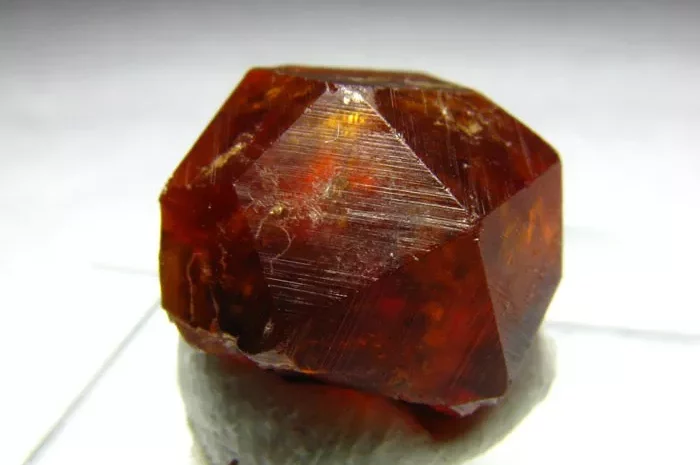PESHAWAR – Zahid Ahmad, a 38-year-old gemstone exporter in Peshawar, is a familiar figure in the bustling Namak Mandi, where he oversees the cutting and polishing of raw gemstones in his shop. With orders pouring in from domestic jewelers and foreign investors, Zahid Ahmad and his team work tirelessly to meet the escalating demands for Khyber Pakhtunkhwa’s gemstones.
As he meticulously cuts and polishes these precious gemstones, Zahid enjoys the strains of the famous Pashto song, “larsha Pekhawar tha qamees tor mala rawora” on his cell phone. He notes that the increasing popularity of KP’s gemstones in both domestic and international markets is due to their brilliance, clarity, and exquisite designs.
Having inherited this meticulous craft from his father 15 years ago, Zahid emphasizes that Pakistan’s rare-earth minerals, including Ruby, Emerald, Sapphire, Topaz, Aquamarine, Quartz, Garnet, Lapis Lazuli, Opal, Agate, Moonstone, Feldspar, Kunzite, and Zircon, are abundant in Khyber Pakhtunkhwa, Gilgit-Baltistan, Azad Kashmir, and southeast Balochistan. These treasures have been a magnet for both domestic and foreign investors.
Zahid Ahmad goes on to explain that the demand for gemstones such as Swat’s emeralds, Mardan’s topaz, Kohistan’s peridot, Chitral’s tourmaline, and Azad Kashmir’s rubies has surged in countries like the UAE, Gulf states, SAARC nations, Central Asian Republics, Europe, and the United States. As one traverses through the vibrant Namak Mandi bazaar, established as a gemstone market in 1970, the abundance of gemstone shops is a testament to the industry’s growth, providing direct and indirect employment to approximately three lakh people.
Ali Akbar, assisting his elder brother in the gemstone business, laments the wastage of precious gemstones due to unmechanized mining, the lack of technology, and laboratories in the province. These issues have resulted in substantial economic losses for the government.
In Khyber Pakhtunkhwa, many stone cutters and polishers still rely on archaic machines, which consume valuable time and often fail to bring out the inherent luster and desired symmetry of gemstones. The lack of professional training and the hazardous traditional mining methods employed by local residents exacerbate the problem, causing irreparable damage to these hidden treasures. Ali Akbar notes that individuals with technical knowledge can easily earn up to Rs15,000 per carat from Emeralds and Sapphires, with potential profits of up to Rs100,000 from Rubies following a modest investment of about Rs0.6 million.
Mamoor Khan, the pattern-in-chief of the All Pakistan Commercial Exporters Association (APCEA), underscores the potential for Pakistan’s economy to benefit significantly by granting industry status to the gemstone sector. Pakistan boasts diverse and rare gemstone deposits, with the potential to export 800,000 carats of Rubies, 87,000 carats of Emeralds, and 5 million carats of peridots annually. Between July 2021 and June 30, 2022, the gemstone sector contributed significantly to exports, with 6.77 million carats of gemstones exported, totaling 193,132.85 USD in August and 422,004.6 USD in July of the same year by APECA.
With modern development, the gemstone sector could become a key player in improving Pakistan’s economic situation. In 2021-22, APECA achieved USD 4 million in gemstone exports. Mamoor Khan cites a report from the Trade Development Authority of Pakistan indicating that gemstone and jewelry exports grew from $14.1 million in 2018 to $14.6 million in 2019. He underscores the importance of technology, professional training, and the need to address heavy taxes that currently hinder gemstone mining in KP.
Dr. Zilakat Malik, former Chairman of the Economics Department at the University of Peshawar, laments that despite its substantial economic potential, the gemstone sector has been overlooked by past governments, contributing to inflation and unemployment.


